Are you looking to build a strong brand identity that resonates with your customers? If so, you may want to consider using a brand pyramid. A brand pyramid is a visual tool that outlines the key tenets of a brand’s market positioning. It helps you understand the building blocks of brand equity and develop a strong brand identity.
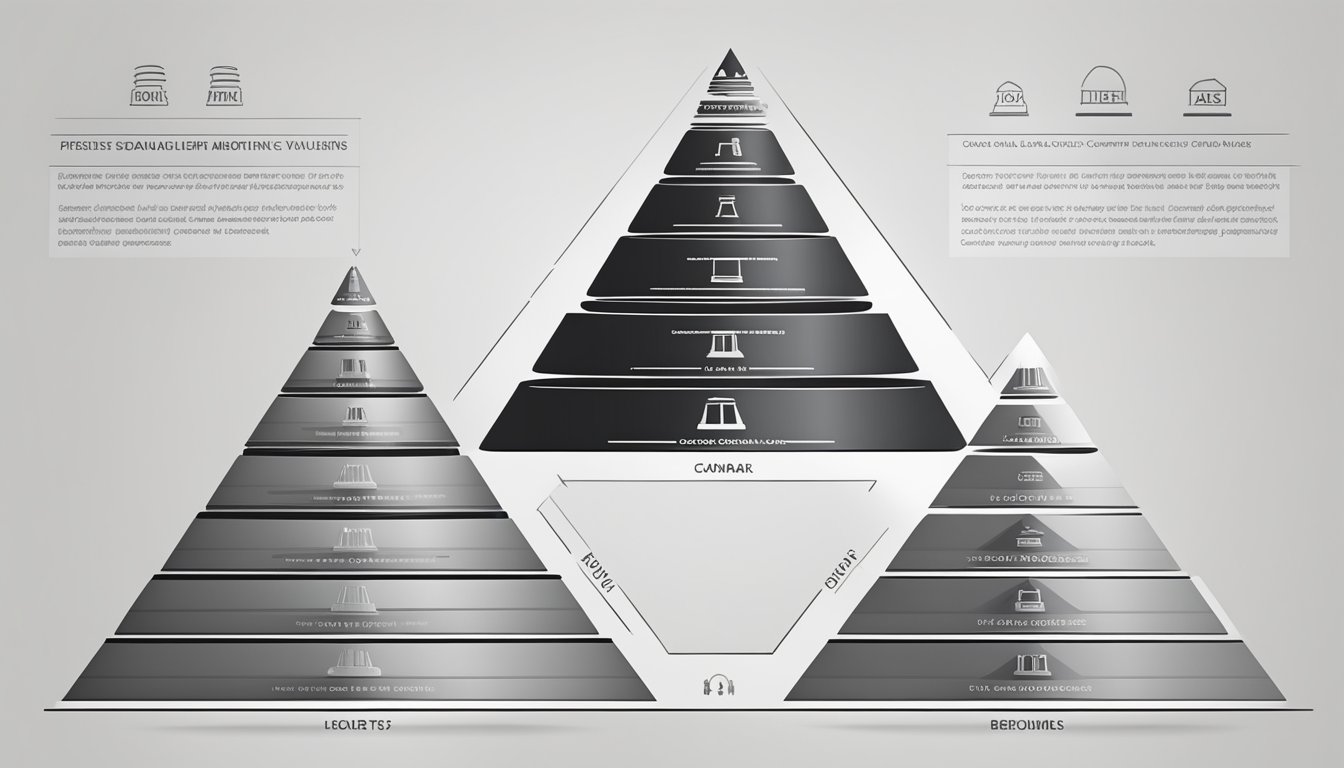
The brand pyramid consists of five levels: features, benefits, response, resonance, and advocacy. Each level builds upon the previous one, creating a strong foundation for your brand. By understanding these levels and how they relate to your brand, you can create a cohesive brand identity that resonates with your customers and sets you apart from your competitors.
In this article, we’ll take a closer look at the brand pyramid, its components, and how to use it effectively. We’ll also explore some real-world examples of brands that have successfully used the brand pyramid to build a strong brand identity. So, whether you’re a marketer, brand manager, or business owner, read on to learn how to develop a strong brand identity that resonates with your customers.
Key Takeaways
- A brand pyramid is a visual tool that outlines the key tenets of a brand’s market positioning.
- The brand pyramid consists of five levels: features, benefits, response, resonance, and advocacy.
- By understanding the brand pyramid and its components, you can develop a strong brand identity that resonates with your customers and sets you apart from your competitors.
Understanding the Brand Pyramid
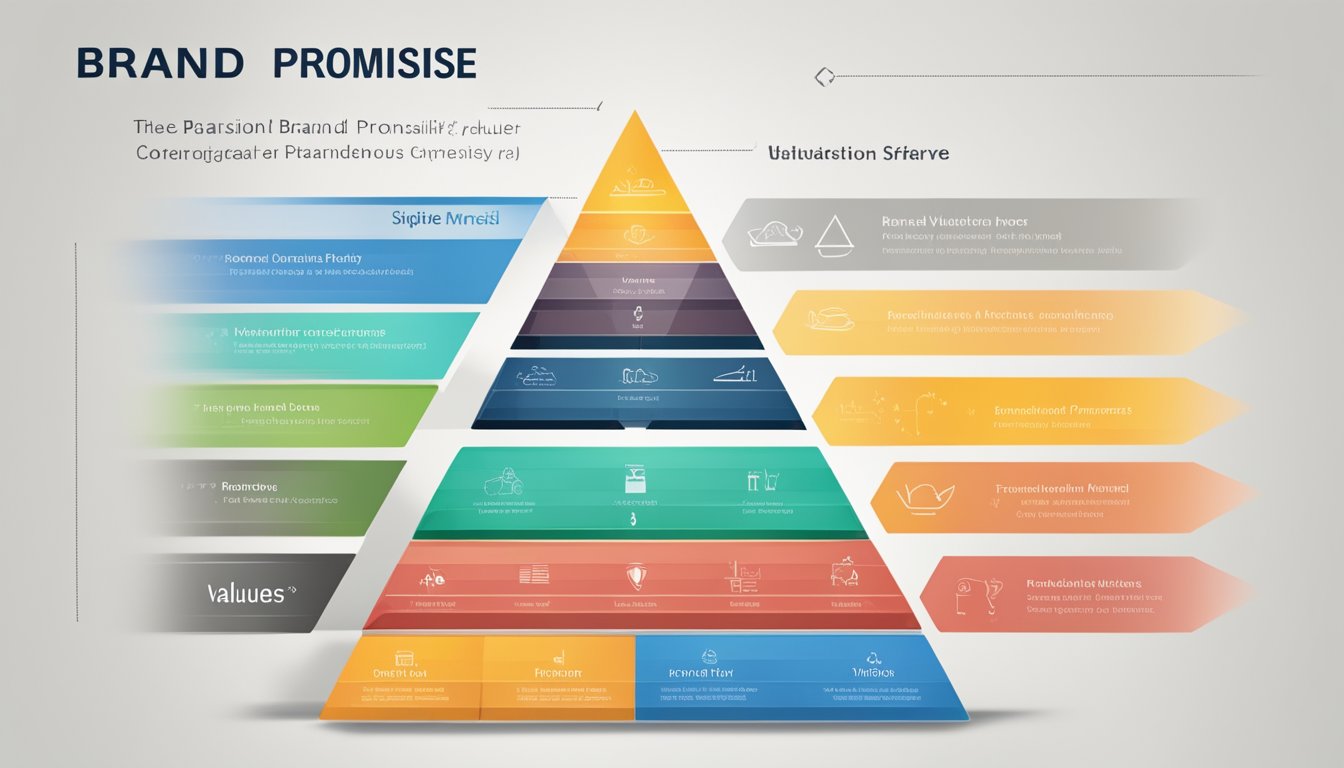
Defining Brand Pyramid
The Brand Pyramid is a framework and tool used in branding and marketing to illustrate the hierarchical structure of a brand’s elements. It represents the key tenets of a brand’s market positioning, from its fundamental attributes to its emotional and symbolic associations. The pyramid is divided into five stages, with the highest stage representing the ultimate goal for a brand.
Historical Context
The Brand Pyramid was first introduced by Millward Brown, a British market research firm, in the early 1990s. It was developed as a way to help companies better understand the relationship they have with their customers and what more they can do to strengthen it. Since then, it has become a widely used tool in brand strategy and marketing.
Importance in Brand Strategy
The Brand Pyramid is an essential tool in brand strategy. It helps companies to identify what their customers’ position is regarding their product and brand and to investigate how loyal they are. The higher customers climb the pyramid, the more loyal they are. Understanding the Brand Pyramid can help companies to develop an effective and targeted marketing strategy and drive up customer loyalty.
The Brand Pyramid is an important part of branding and marketing strategy. It helps companies to understand the relationship they have with their customers and what more they can do to strengthen it. By understanding the key elements of a brand’s market positioning, companies can develop an effective and targeted marketing strategy to drive up customer loyalty.
Components of the Brand Pyramid
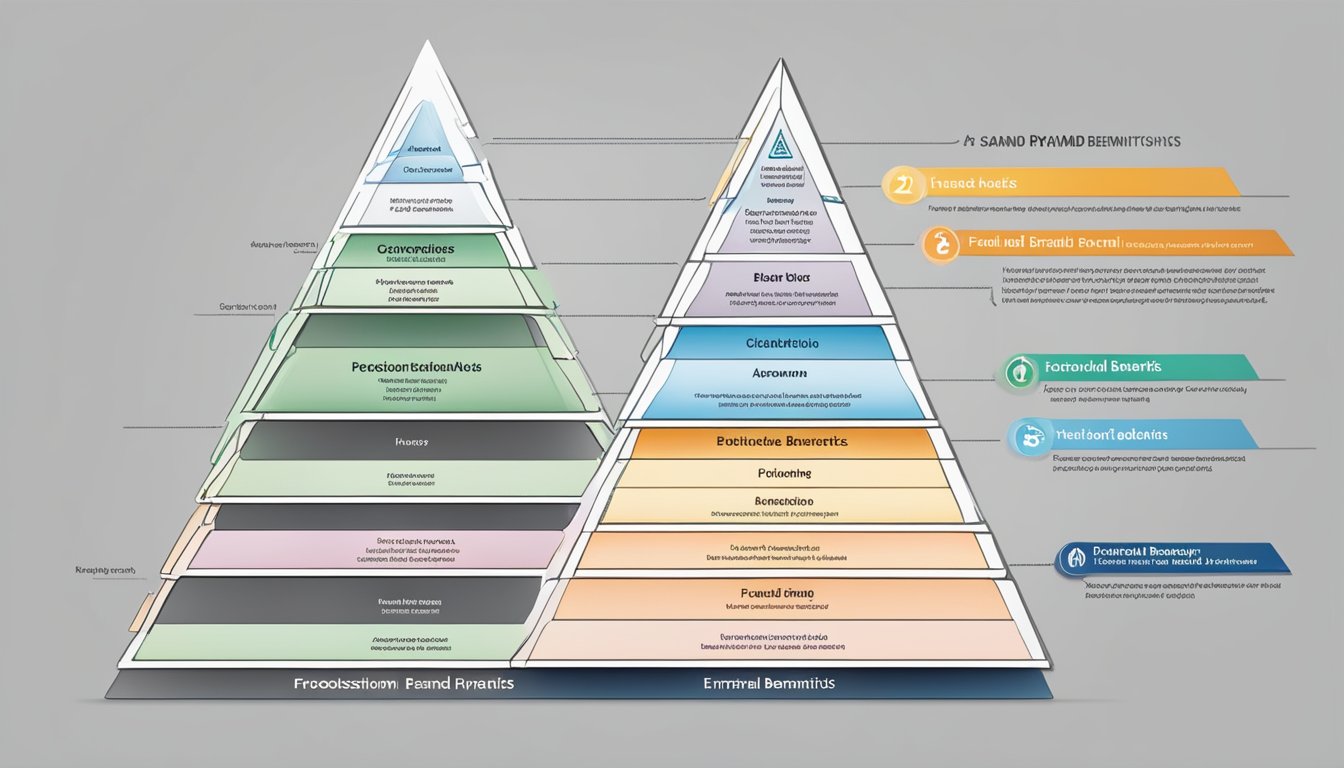
The Brand Pyramid is a conceptual framework that helps businesses to develop a memorable, meaningful brand in the marketplace. It is a five-level model that identifies the critical elements required to create a strong brand that inspires customer trust, preference, and loyalty.
Foundation: Features and Attributes
The foundation of the Brand Pyramid is made up of the features and attributes of the brand. This includes the brand’s core functionality, the benefits it offers over its competitors, and the personality it conveys to its customers. These features and attributes are what make the brand unique and distinguish it from its competitors.
Middle Layers: Benefits and Brand Essence
The middle layers of the Brand Pyramid are focused on the benefits that the brand offers to its customers. This includes both the functional benefits, such as the product’s performance, and the rational benefits, such as its value for money. Additionally, the brand essence is also a key element of the middle layers. This is the intangible quality that makes the brand special and sets it apart from its competitors.
Apex: Emotional Benefits and Brand Resonance
At the apex of the Brand Pyramid are the emotional benefits and brand resonance. Emotional benefits are the intangible benefits that the brand offers to its customers, such as a feeling of security or happiness. Brand resonance is the ultimate goal of the Brand Pyramid. It is when customers feel a deep connection with the brand and become loyal advocates.
Overall, the Brand Pyramid is an essential tool for businesses looking to build a strong brand. By understanding the key components of the Brand Pyramid and using them to guide their branding efforts, businesses can create a brand that resonates with customers and inspires loyalty. So, invest in building your brand pyramid, and watch your business grow!
Developing a Strong Brand Identity
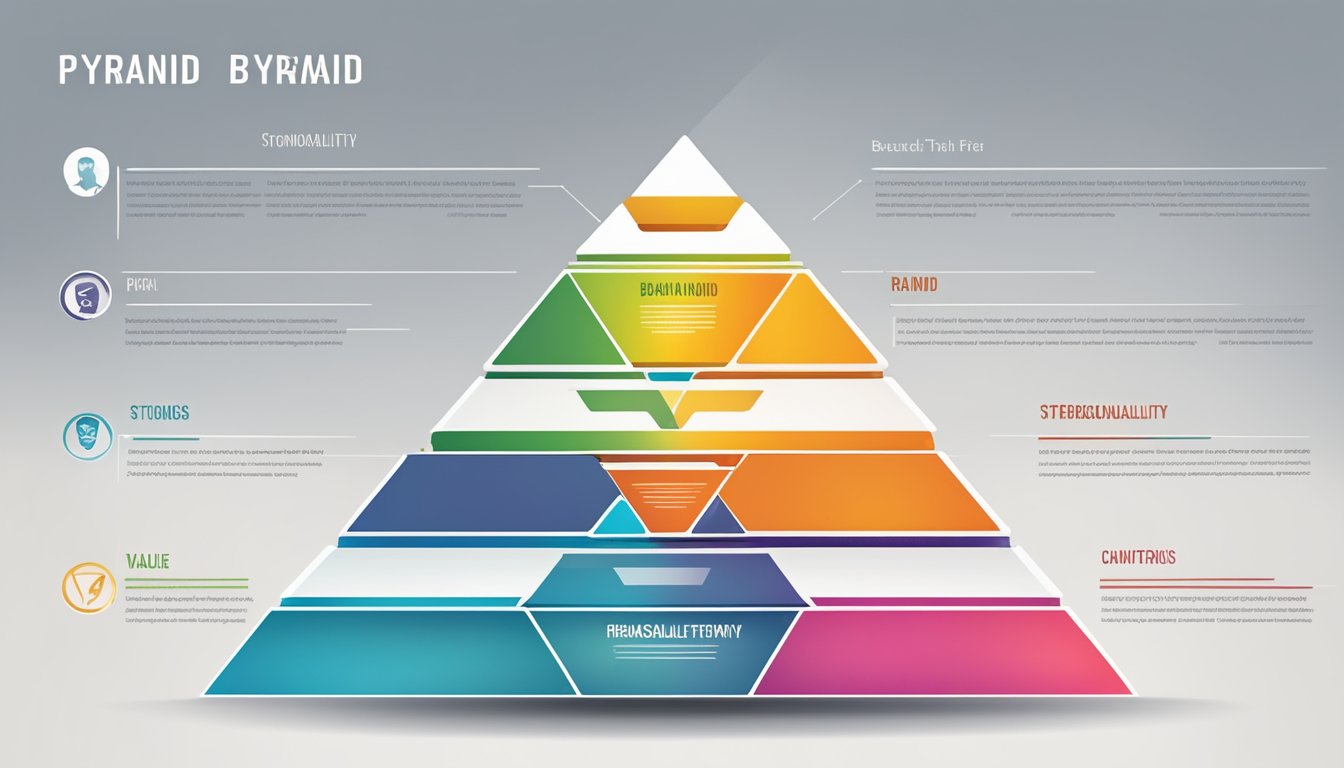
Your brand identity is the foundation of your business. It is what sets you apart from your competitors and helps to create an emotional connection with your customers. A strong brand identity is crucial for building customer loyalty and maintaining a positive reputation in the marketplace.
Crafting a Unique Brand Persona
Crafting a unique brand persona is essential for creating a strong brand identity. Your brand persona should be a reflection of your company’s values, mission, and vision. It should also be consistent with your target audience and the products or services you offer.
To create a unique brand persona, you should consider the following:
- What makes your business unique?
- What are your company’s values and mission?
- Who is your target audience?
- What are the key benefits of your products or services?
By answering these questions, you can create a brand persona that is unique and relevant to your target audience.
Consistency in Messaging and Design
Consistency in messaging and design is crucial for building a strong brand identity. Your messaging and design should be consistent across all channels, including your website, social media, and marketing materials.
To achieve consistency in messaging and design, you should consider the following:
- Use the same fonts, colours, and logo across all channels.
- Create a style guide to ensure consistency in messaging and design.
- Use the same tone of voice in all communications.
- Ensure that all messaging and design are relevant to your target audience.
By achieving consistency in messaging and design, you can create a strong brand identity that is easily recognisable and memorable.
Building Customer Loyalty
Building customer loyalty is essential for maintaining a positive reputation in the marketplace. It is also crucial for creating a strong brand identity. By building customer loyalty, you can create a loyal customer base that will continue to support your business over time.
To build customer loyalty, you should consider the following:
- Offer excellent customer service.
- Provide high-quality products or services.
- Create a loyalty program to reward loyal customers.
- Engage with your customers on social media and through email marketing.
By building customer loyalty, you can create a strong emotional connection with your customers and build a loyal customer base that will support your business for years to come.
Overall, developing a strong brand identity is essential for building customer loyalty and maintaining a positive reputation in the marketplace. By crafting a unique brand persona, achieving consistency in messaging and design, and building customer loyalty, you can create a strong brand identity that is easily recognisable and memorable.
Brand Pyramid in Action
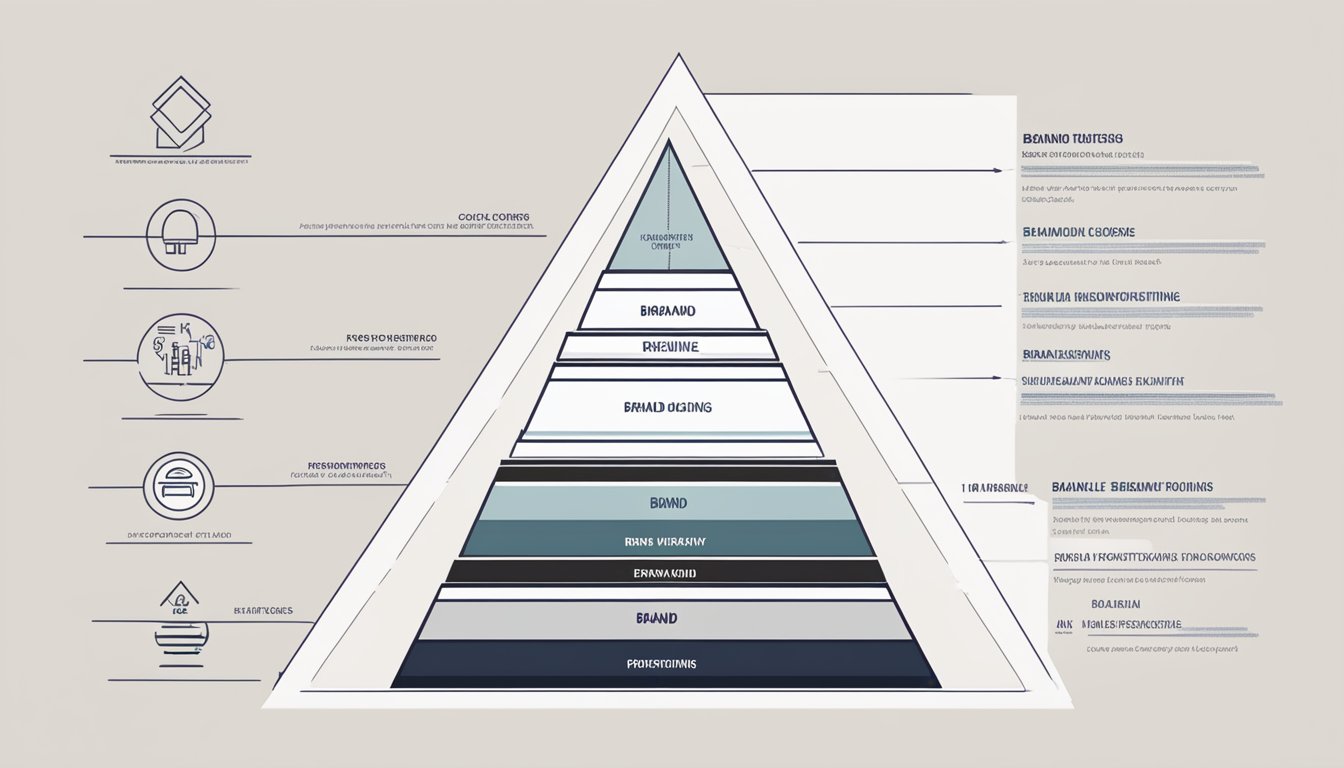
Now that you have a better understanding of what a brand pyramid is and how it works, let’s take a look at some real-world examples of brands that have successfully implemented this model.
Real-World Examples
One of the most well-known examples of a brand pyramid in action is Apple. The company has built a strong brand equity over the years, thanks in part to its marketing team’s use of the brand pyramid. Apple’s brand pyramid emphasizes the emotional response that its products elicit from customers, as well as the perceived value of its products. This has helped to create a loyal customer base that is willing to pay a premium for Apple products.
Another example of a brand pyramid in action is Volvo. The car manufacturer has used its brand pyramid to build a reputation for safety and reliability. The company’s marketing team has emphasized the performance and advantage stages of the pyramid, highlighting the features that make Volvo cars stand out from the competition. This has helped to create a perception of quality and dependability that has helped Volvo to build a loyal customer base.
Case Study: Apple
Let’s take a closer look at how Apple has used its brand pyramid to build a successful brand. At the base of Apple’s brand pyramid is its fundamental attributes, which include features like design, innovation, and ease of use. These attributes are what set Apple apart from its competitors and form the foundation of its brand.
Moving up the pyramid, we come to the emotional response stage. Apple has done an excellent job of creating an emotional connection with its customers, thanks in part to the company’s focus on design and user experience. Apple products are not just functional; they are also aesthetically pleasing and enjoyable to use.
At the top of the pyramid, we have the perceived value stage. Apple has built a reputation for quality and dependability, which has helped to create a perception of value among its customers. This has allowed the company to charge a premium for its products, which has helped to boost its bottom line.
Case Study: Volvo
Now let’s take a closer look at how Volvo has used its brand pyramid to build a successful brand. At the base of Volvo’s brand pyramid is its fundamental attributes, which include safety, reliability, and durability. These attributes are what set Volvo apart from its competitors and form the foundation of its brand.
Moving up the pyramid, we come to the performance stage. Volvo has emphasized the performance of its cars, highlighting features like fuel efficiency and handling. This has helped to create a perception of quality and performance that has helped Volvo to build a loyal customer base.
At the top of the pyramid, we have the advantage stage. Volvo has emphasized the advantages of its cars, highlighting features like safety and environmental friendliness. This has helped to create a perception of value among its customers, which has allowed the company to charge a premium for its products.
In conclusion, the brand pyramid is a powerful tool for building a successful brand. By focusing on the fundamental attributes of your brand, creating an emotional connection with your customers, and emphasizing the perceived value of your products, you can build a loyal customer base that is willing to pay a premium for your products.
Measuring Brand Pyramid Success

When it comes to measuring the success of your brand pyramid, there are a few key factors to consider. By taking a closer look at your brand audit and market positioning, as well as assessing your brand momentum and equity, you can gain a better understanding of how your brand is performing and where there may be room for improvement.
Brand Audit and Market Positioning
One of the first steps in measuring the success of your brand pyramid is to conduct a brand audit. This involves taking a closer look at your brand’s place in the market, as well as your overall positioning and performance. By conducting a thorough brand audit, you can gain a better understanding of where your brand stands in relation to your competitors, as well as identify any areas where you may be falling short.
Assessing Brand Momentum and Equity
Another important factor to consider when measuring the success of your brand pyramid is your brand’s momentum and equity. This involves taking a closer look at your brand’s overall performance and advantage in the market, as well as your positioning and place in the minds of consumers. By assessing your brand’s momentum and equity, you can gain a better understanding of how your brand is performing and where you may need to make adjustments to improve your overall performance.
Overall, measuring the success of your brand pyramid involves taking a closer look at your brand audit, market positioning, brand equity, momentum, and performance. By assessing these key factors, you can gain a better understanding of how your brand is performing and where you may need to make adjustments to improve your overall performance. So if you want to take your brand to the next level, it’s important to take a closer look at these key factors and make adjustments as needed.
Frequently Asked Questions
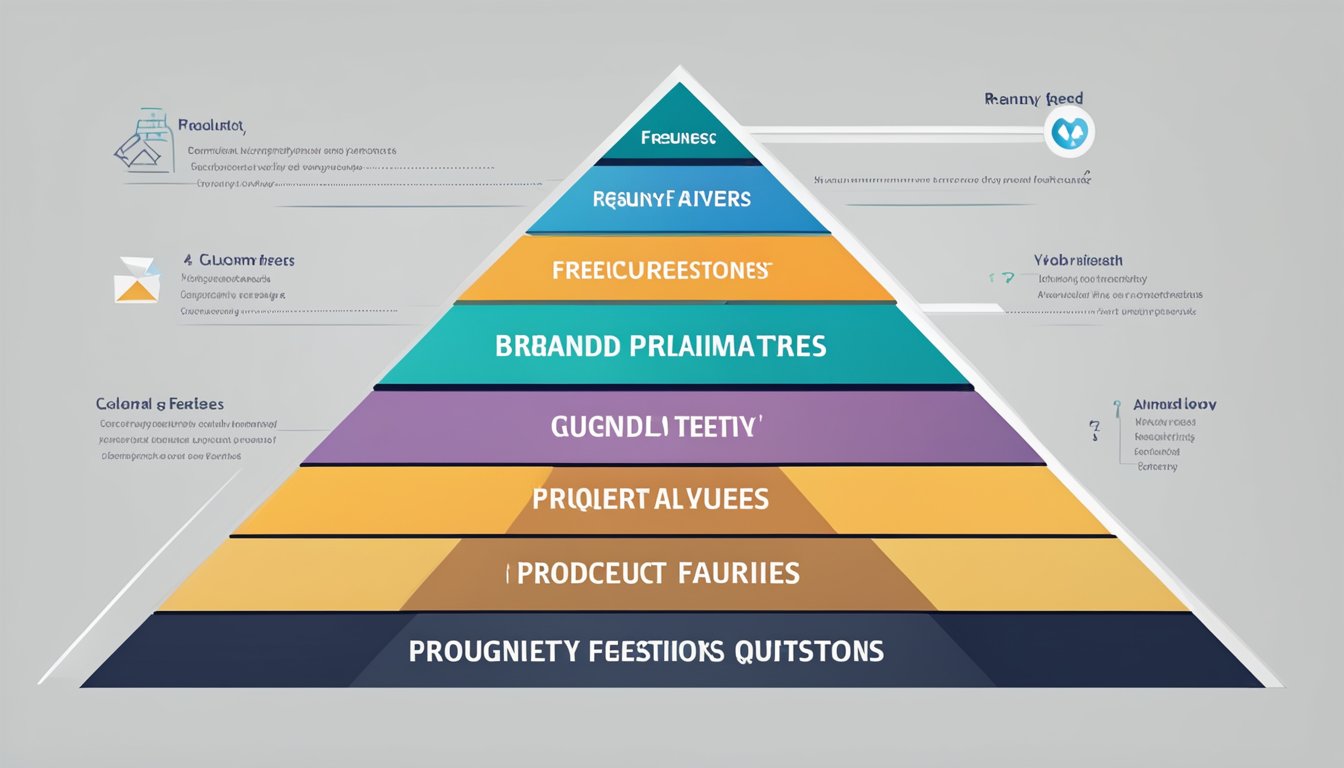
What are the essential elements that construct a brand pyramid?
A brand pyramid is a model that outlines the key elements of a brand’s market positioning. The essential elements that construct a brand pyramid include the brand’s mission, vision, target audience, brand personality, and core values. These elements form the foundation, centre, and tip of the pyramid.
How can luxury brands leverage the brand pyramid model to enhance their value?
Luxury brands can leverage the brand pyramid model to enhance their value by creating a strong brand identity that resonates with their target audience. By focusing on the essential elements of the brand pyramid, luxury brands can differentiate themselves from their competitors and create a unique brand experience that appeals to consumers.
Could you showcase some stellar examples of effective brand pyramid implementations?
Some stellar examples of effective brand pyramid implementations include Apple, Nike, and Coca-Cola. These brands have created a strong brand identity that resonates with their target audience by focusing on the essential elements of the brand pyramid.
Where can one find a comprehensive template to develop a brand pyramid strategy?
There are many resources available online that provide comprehensive templates to develop a brand pyramid strategy. Some popular resources include HubSpot, Brandfolder, and Amati and Associates.
In what ways does the brand pyramid influence marketing efforts and consumer perception?
The brand pyramid influences marketing efforts and consumer perception by providing a framework for creating a strong brand identity. By focusing on the essential elements of the brand pyramid, marketers can create a brand experience that resonates with their target audience and influences consumer perception.
What steps are involved in creating a brand engagement pyramid that resonates with audiences?
The steps involved in creating a brand engagement pyramid that resonates with audiences include identifying the target audience, defining the brand’s mission and vision, developing the brand personality and core values, and creating a unique brand experience that resonates with the target audience. By following these steps, marketers can create a brand engagement pyramid that resonates with their target audience and influences consumer perception.




